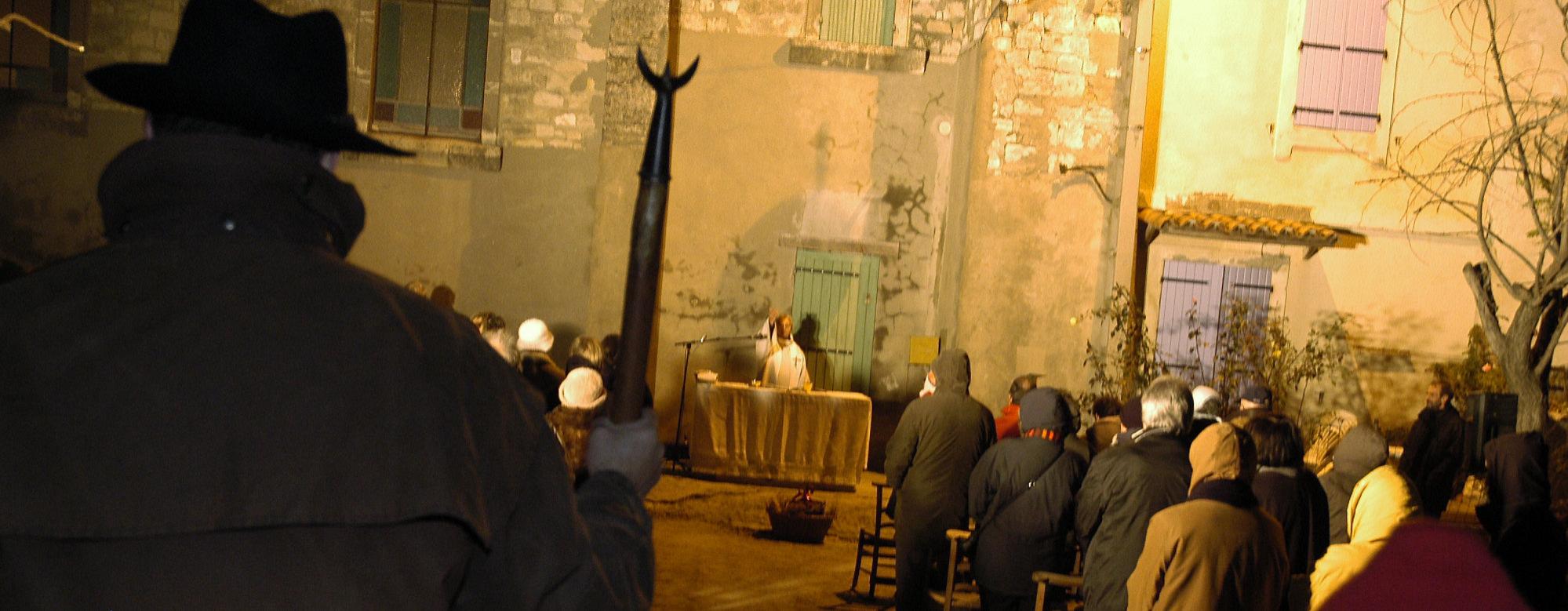

After the “cacho-fio” comes the “gros souper”, the “big” supper served before going to midnight mass on Christmas Eve. The “gros souper” must be served on a table decorated according to the Provençal tradition : three white tablecloths on which will be placed three white candlesticks and three saucers containing the sprouts of the Saint Barbe wheat, symbolizing the Trinity and Hope. The menu is composed of seven lean dishes, a remembrance of the seven pains of the Virgin Mary. They are generally accompanied by vegetables and other family-style food items. But these foods must naturally be traditional Provençal vegetables such as chard or cardoons, celery and the like, served with anchovy sauce.
They are 13 in honour of the 13 people present at the Last Supper (Christ and the 12 disciples), and are served after midnight mass on Christmas night.
- the 4 “beggars” : (named for the colours of the robes of the monks of the “beggar” orders) : dried figs (Franciscans), almonds (Carmelites), raisins (Dominicans) and walnuts (Augustinians);
- dates, symbolizing Christ coming from the East;
- white and black nougat, white for purity and Good, black for the impure and Evil;
- “fougasse”, a brioche or bun made with olive oil;
- candied quince or other candied fruit;
- "oreillettes” (deep-fried sugar pastries);
- fresh fruit : oranges, tangerines, pears, grapes or winter melons.
Midnight mass celebrates the birth of the Baby Jesus. The religious service will be accompanied by an evening vigil where Provençal Christmas songs are sung, and the “Pastrage” ceremony when a new-born lamb will be brought as an offering, carried by a shepherd or pulled in a gilded cart. The “pastorale” is a play representing the Nativity scene and evoking the arrival of the shepherds at the manger where the Baby Jesus is lying. The pastorals are spoken or sung in the Provençal language by actors wearing Provençal dress. They take place throughout the entire Christmas season.
According to this tradition, on Saint Barbara’s day (Dec. 4) grains of wheat or lentils are placed to sprout in three different saucers, covered by wet cotton. If the stalks grow straight and green it is a signal that the coming year will be prosperous. The new plants will later be placed in the family crèche.
This ceremony takes place on Christmas Eve just before the “gros souper”. The youngest and oldest members of the family choose a Yule log from a fruit tree, which they carry three times around the dining table. The “grandfather” places the Yule log on the hearth fire and then blesses it with mulled wine. He then pronounces the following words in Provençal :
“Cacho-fio (Yule log)
Bouto-fio (Give us a warm fire)
Alègre, alègre (Joy, joy)
Dièu nous alègre (God give us joy)
Calènde vèn, tout bèn vèn (Christmas is coming, everything is coming well)
Dièu nous fague la gràci de veire l’an que vèn (God grant us the grace to see the coming year)
E se noun sian pas mai, que noun fuguen pas mens” (And if there are no more of us, may there be no less of us)".
Epiphany symbolizes the arrival of the Three Wise Men, Melchior, Gaspard and Balthazar, at the manger where the Baby Jesus was born. They followed the Shepherds’ star which guided them to Bethlehem in Galilee. They knelt before Christ and offered their presents. Today we celebrate the arrival of the Three Kings with a special cake called the “Kings’ cake” (gateau des rois). In Provence this cake is a brioche-type pastry filled with candied fruit and sprinkled with sugar. Inside the cake are hidden a bean and a santon. The person who finds the bean is declared “king” and the one who finds the santon becomes his subject or servant.
The Christmas season in Provence ends with Candlemas. This is the day when the manger scenes are removed from Provençal dwellings.
Candlemas celebrates the purification of the Virgin Mary and the presentation of Jesus in the temple.
In Provence it is traditional to have a candle blessed at church, and then the family must return home without the candle going out, otherwise it is a bad omen.
Then it is time for crêpes (French pancakes)! When the first crêpe is made, the cook must hold a piece of money in one hand and flip the crêpe with the other.
The coin is then folded inside the crêpe and saved until the next year. Last year’s crêpe will be thrown out and the money given to a needy person.